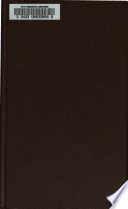 | Charles Davies - Navigation - 1837 - 342 pages
...gether and take half their sum. From this half sum subtract each side separately. Then, multiply the half sum and the three remainders together, and extract the square root of the product : the result will be the area (Gcom. Mens. Prob. II). Or, after having obtained the three remainders,... | |
 | Charles Davies - Surveying - 1839 - 376 pages
...together and take half their sum. From this half sum subtract each side separately. Then, multiply the half sum and the three remainders together, and extract the square root of the product : the remit will be the area (Geom. Mens. Prob. II). Or, after having obtained the three remainders,... | |
 | Charles Davies - Surveying - 1839 - 376 pages
...together and take half their sum. From this half sum subtract each side separately. Then, multiply the half sum and the three remainders together, and extract the square root of the product : the result will be the area (Geom. Mens. Prob. II). Or, after having obtained the three remainders,... | |
 | Charles Davies - Navigation - 1835 - 388 pages
...together and take half their sum. From this half sum subtract each side separately. Then, multiply the half sum and the three remainders together, and extract the square root of the product : the renult mill be the area (Geom. Mens. Prob. II). Or, after having obtained the three remainders,... | |
 | Joseph Gwilt - Architects - 1842 - 1114 pages
...severally from such half sum, by which three remainders will be obtained. Multiply such half ягпп and the three remainders together, and extract the square root of the last product, which is the area of the triangle. This rule is founded on one of the theorems in Trigonometry... | |
 | Horatio Nelson Robinson - History - 1853 - 334 pages
...— Add the three sides together and take half the sum. From the half sum take each side separately , thus obtaining three remainders. Multiply the said half sum and the three remainders together ; the •square foot of this product is the area' required. 1. Find the area of a triangle whose sides... | |
 | Charles Davies - Navigation - 1854 - 446 pages
...together and take half their sum. From this half sum subtract each side separately. Then, multiply the half sum and the three remainders together, and extract the square root of the product: the result will be the area (Geom. Mens., Art. 7). Or, after having obtained the three remainders,... | |
 | Septimus Tebay - Measurement - 1868 - 168 pages
...the three sides are given. From half the sum of the sides subtract each side separately; multiply the half sum and the three remainders together, and extract the square root. Ex. 1. Find the area of a triangle whose sides are 19, 24, 34. 7So7S 375375 300300 75o75 10885875 45... | |
 | Charles Davies - Leveling - 1871 - 448 pages
...together and take half their sum. From this half sum subtract each side separately. Then, multiply the half sum and the three remainders together, and extract the square root of the product : the result will be the area (Geom. Mens., Art. 97). Or, after having obtained the three remainders,... | |
 | Joseph Ray - Arithmetic - 1877 - 402 pages
...Rule. — 1. From half the sum of the three sides take each side separately. 2. Multiply the half-sum and the three remainders together, and extract the square root of the product. '. The base of a triangle is 15 ft. and its altitude 12 ft. : what is its area ? 90 sq. ft. f. One... | |
| |